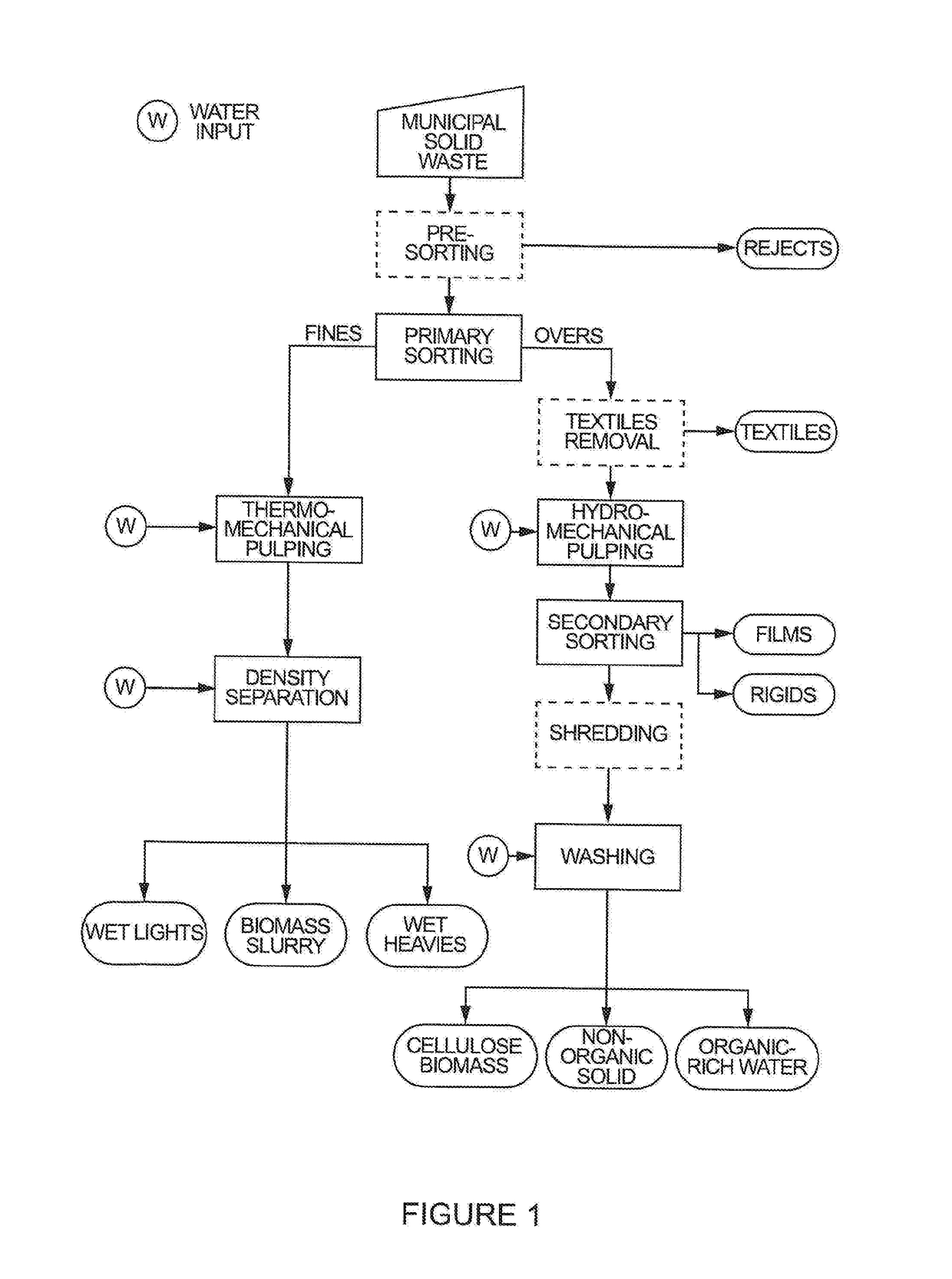Waste processing
a technology of waste and processing technology, applied in the field of waste processing, can solve the problems of wasting resources, wasting resources, and not being able to achieve the best use of available land in a world with an ever-increasing population, and achieve the effect of cellulose-rich biomass
- Summary
- Abstract
- Description
- Claims
- Application Information
AI Technical Summary
Benefits of technology
Problems solved by technology
Method used
Image
Examples
Embodiment Construction
[0014]According to the present invention, there is provided a method for processing mixed waste, comprising the steps of:[0015]a) separating said waste into at least two parts, comprising: (i) mainly food waste (fines) and (ii) mainly paper and other recyclable material (overs);[0016]b) pulping said overs; and[0017]c) washing said pulped overs to obtain a cellulose-rich biomass; and optionally[0018]c) processing said fines to obtain a cellulose-rich biomass.
[0019]The aforementioned process is not only a method for processing mixed waste, but is also a method for obtaining a cellulose-rich biomass, which process enables the recovery of a greater yield of cellulose-rich biomass and / or a cleaner cellulose-rich biomass than that obtainable by conventional waste processing processes, such as processes for (mixed) waste recycling and / or recovery.
[0020]The method according to the invention is suitable for the processing of mixed waste, preferably Municipal Solid Waste or MSW, i.e. the typi...
PUM
| Property | Measurement | Unit |
|---|---|---|
| size | aaaaa | aaaaa |
| size | aaaaa | aaaaa |
| diameter | aaaaa | aaaaa |
Abstract
Description
Claims
Application Information
 Login to View More
Login to View More - R&D
- Intellectual Property
- Life Sciences
- Materials
- Tech Scout
- Unparalleled Data Quality
- Higher Quality Content
- 60% Fewer Hallucinations
Browse by: Latest US Patents, China's latest patents, Technical Efficacy Thesaurus, Application Domain, Technology Topic, Popular Technical Reports.
© 2025 PatSnap. All rights reserved.Legal|Privacy policy|Modern Slavery Act Transparency Statement|Sitemap|About US| Contact US: help@patsnap.com

